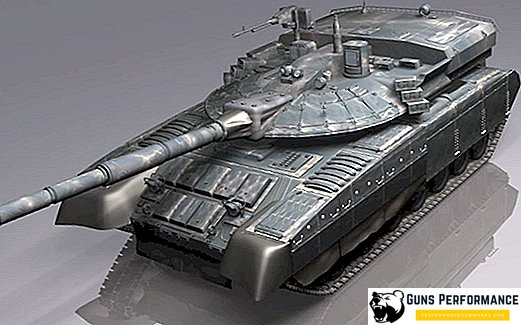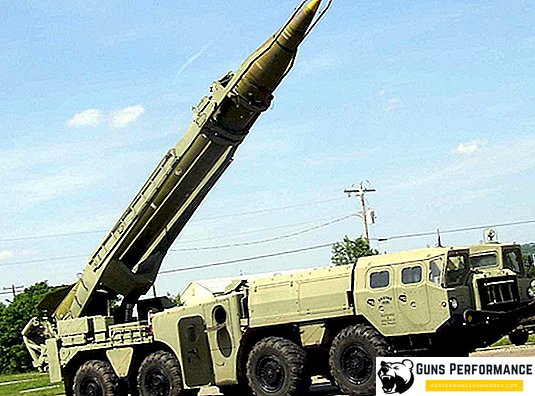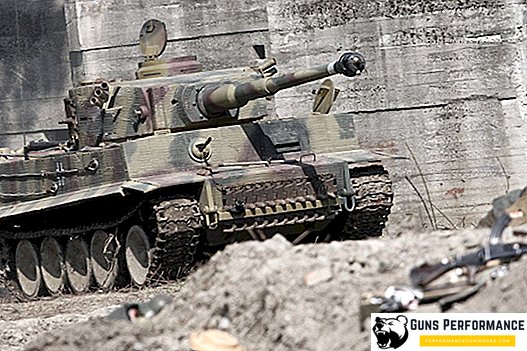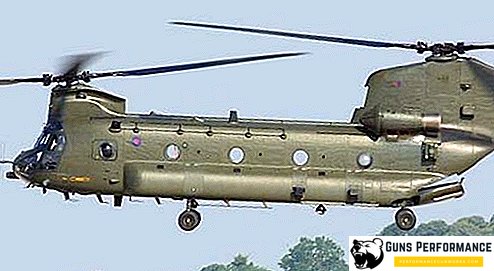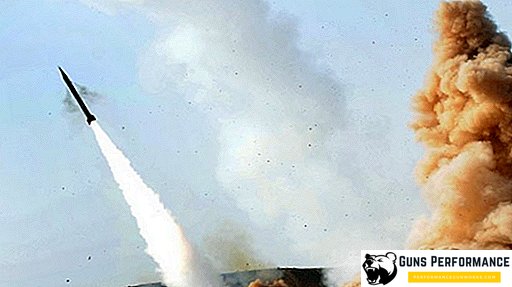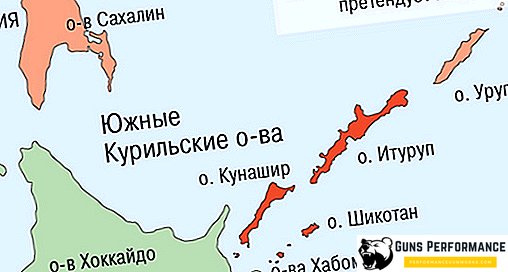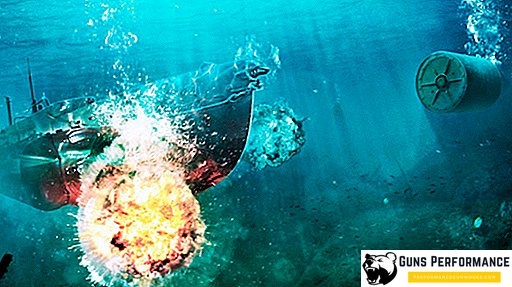
The emergence of submarines was a turning point in the history of the development of the navy. The first submarines brought real horror to the sailors, because how can you resist the enemy, hidden by the sea abyss, to the blow which can not be answered. Soon, the fight against enemy submarines became one of the most important combat missions for any navy. The admirals had to think hard about changing the tactics of warfare and the search for new tools with which to resist the new threat.
And in 1914, such a tool was created: in Britain, the first depth bomb was tested - the most important type of anti-submarine weapon that is in service with most of the world's fleets today. The first means of anti-submarine defense, including depth charges, were not perfect, so during the First and Second World War, German submariners were able to arrange real terror on enemy communications. But by the end of the Second World War, the Allies were able to find effective means of struggle against the German submarine fleet.
The post-war period was marked by a real revolution in the development of the submarine fleet. Submarines received a nuclear power plant and intercontinental ballistic missiles as the main weapon. The issue of fighting the underwater threat has become a strategic one. Now, the anti-submarine defense has become part of a much more important task - the defense of one’s own territory from the enemy’s nuclear strike. Therefore, they did not spare funds for its solution. It was during the Cold War that nuclear depth charges and torpedoes with a nuclear warhead appeared in the fleet's armaments. The last ammunition of this type was removed from service in the 90s of the last century.

In the USSR, this type of weapon was practically ignored for a long time. Only in the beginning of the 1930s, two depth charges were immediately adopted by the domestic fleet: the BB-1 and BM-1. These were ordinary metal barrels filled with TNT. They had a fuse with a clockwork, which allowed to hit targets at depths of up to 100 meters. During the bombing, the BB-1 and BM-1 were simply dumped overboard using stern or side bombers. The insufficient speed of immersion of these munitions made it difficult to defeat enemy submarines.
During the war, Soviet sailors mainly used depth charges, delivered to the country under the Lend-Lease. American and British ammunition significantly exceeded the Soviet bombs in their basic characteristics. A significant increase in the depth of submersion submarines (200-220 meters), which became a common tactic by the end of the war, made the Soviet ammunition almost useless. Although, it should be noted that the most advanced samples of these weapons were not supplied to the USSR.

In our time, depth charges are fading into the past, they are replaced by more accurate types of anti-submarine weapons (guided torpedoes, rocket-torpedoes), but at the same time they are still in service with the world's largest naval forces. However, before we talk about modern types of these weapons, we should give a description of the depth bomb design, and also say a few words about the features of their use.
Depth bombs: general description and main features
Depth bomb is a type of ammunition designed to destroy submarines in their combat (submarine) position. It consists of a body, an explosive charge and a fuse. Instead of conventional explosives, a nuclear charge can be used. The depth bomb fuse can also be different: contact, contactless, or calculated for activation at a given depth. Often, depth charges have several fuses.

The contact fuse is triggered after hitting the submarine hull, non-contact - when the ammunition is passing at a certain distance from the submarine. A non-contact fuse may react to the magnetic field of the submarine or the noise it produces. The fuse, designed to operate at a certain depth, has a hydrostat that is triggered by an increase in pressure and activates the detonator. This type of fuse allows you to pre-set the depth at which the explosion will occur.

In a simplified form, the depth bomb is a cylinder filled with explosives. Originally they were made in the form of a barrel. However, this form of ammunition is rather imperfect, it causes a low speed of the bomb to sink, and, as a rule, causes the ammunition to "tumble" in the wake of an anti-submarine ship. Throw a tin into the pool, and you will see what kind of tricks it will perform during the dive. Such "acrobatics" not only slows down the immersion of ammunition, but also significantly leads him away from the point of discharge. Which, in turn, reduces the accuracy of the bombing.
It is because of the hydrodynamic imperfection that the use of cylindrical depth charges has long been abandoned. Modern ammunition of this type are pear-shaped or drop-shaped, usually they are equipped with tail feathers - stabilizers, which further increases the accuracy of their use.

How does the depth bomb?
The principle of the depth bomb is based on the fact that water, like any other liquid, is practically not compressed. The force of a ground explosion rather quickly decreases, because the shock wave is absorbed by the air and gradually disappears. In water, the situation is different, the blast wave creates a lot of pressure, which is very effective even at a considerable distance from the epicenter. So for the destruction of the hull of a submarine is not necessarily a direct hit (although, of course, it is preferable). An explosion of a depth bomb next to a submarine may well destroy its hull or significantly damage the internal mechanisms of the submarine. The force of the explosion gradually decreases with increasing radius of propagation of the shock wave. Nuclear depth bombs have the most deadly force, the radius of their defeat can reach several thousand meters.

Naturally, the submarine does not pretend to be a fixed target, but in every possible way tries to escape from a volley of depth charges aimed at it. Modern means of hydroacoustics allow the submarine to "hear" what is happening on the surface and determine the time of bombing. After that, she begins dodging maneuvers, the purpose of which is to avoid meeting with deadly "goodies". It should be noted that the submarine, acting in three dimensions, can quite successfully escape from the defeat of depth charges. To do this, the boat can change the depth, course, speed, drift or freeze without moving. Lie down on the bottom or go zigzag, to complicate the anti-submarine ships to their task. Maneuvering the submarine during bombing is a lot like the action of an airplane during a rocket attack.
Anti-submarine ship drops depth charges blindly, focusing only on the data acoustics. But acoustic contact is not a very reliable thing, it is often interrupted. Therefore, the depth bomb is a very inaccurate weapon, for guaranteed destruction of a submarine, as a rule, hundreds of bombs are needed.

One of the main characteristics of the depth charge is the rate of its immersion, the higher it is, the more effective the ammunition.
Depth charges can be applied in different ways. Initially, they were simply thrown from the stern of anti-submarine ships, but this method was not very effective. Often, after getting into the water, the ammunition was picked up by the wake of the ship and significantly changed the direction of its immersion. Later for the use of depth charges began to use bomb-bombets of various designs. Usually they were mortars, from which the bombs were fired from a certain angle of elevation. Bombers significantly increased the efficiency of using depth charges, as they made it possible to quickly cover a large portion of the water surface with a volley.
After the Second World War, jet bombs were taken into service, and missile depth charges (RBC) were used as ammunition.
The jet depth bomb has a stabilizer and a solid propellant jet engine. Such ammunition not only allows for more accurate and fast bombing, but also has a high immersion rate, due to the acceleration with which the bomb enters the water.

Currently, depth charges are used not only from ships, but also from airplanes and helicopters. Today, the Russian Navy is armed with the PLAB-250-120 anti-submarine bomb. The weight of this ammunition is more than 120 kg, of which 60 kg falls on explosives. Also, modern depth charges can be delivered to the place of use with missiles.
Of the modern Russian jet bombers, the RBU-6000 Smerch-2 and RBU-1000 Smerch-3 can be noted, as well as the Udal-1M complex, which can not only fight enemy submarines but also destroy enemy torpedoes saboteurs




